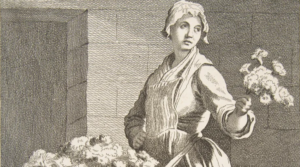On Dec. 12, 1719, a ship named “La Mutine,” the Mutinous Woman, left the French port of Le Havre. The frigate was bound for the vast territory in what is now the United States that the French called “Louisiana” in honor of King Louis XIV. The vessel transported only female passengers, all of them convicts taken from one of Paris’s most notorious prisons. Most of the 96 women on board had been labeled “prostitutes,” as if they had been legally convicted of engaging in the exchange of sexual acts for money. But the reality behind the Mutinous Women’s lives in France is far more complicated.
Many of the prisoners had been arrested only months before departure, when corrupt officers of the Parisian police were rounding up women specifically to be shipped off across the Atlantic. Authorities had suddenly become aware of a critical lack of Frenchwomen in a colony that Indies Company officials hoped to develop quickly and turn into a major producer of tobacco, thus allowing France to rival English colonies along the Chesapeake. Any woman out and about in the streets of Paris was in danger of being arrested on trumped-up charges.
Amazon wins approval for helix-shaped headquarters tower in northern Virginia (photo)
Among them was Manon Fontaine, a 19-year-old illiterate Parisian street vendor, who was walking the cobblestones of her native city all day long selling day-old fruit from a basket strapped around her waist, when she was arrested and charged with murder. Even though Manon had been elsewhere at the time of the crime and could prove it; even though, under questioning, the alleged witnesses who had testified against her all admitted that they had never seen her before, Manon Fontaine spent 19 years behind bars—until she was transported to Louisiana.
Read more: TIME
Ask me anything
Explore related questions





